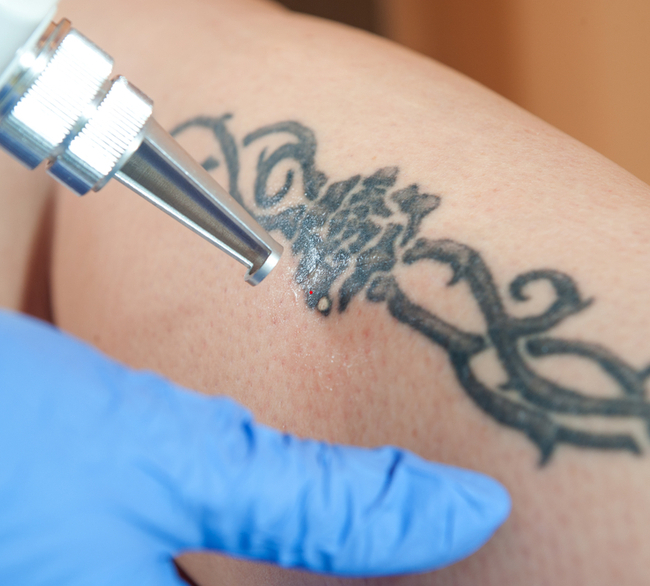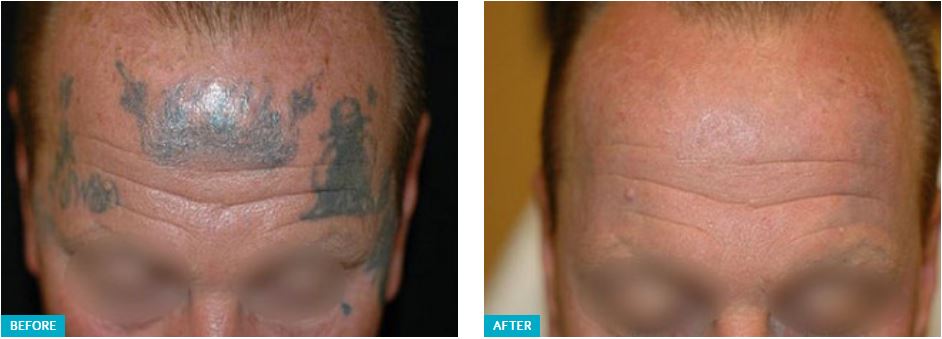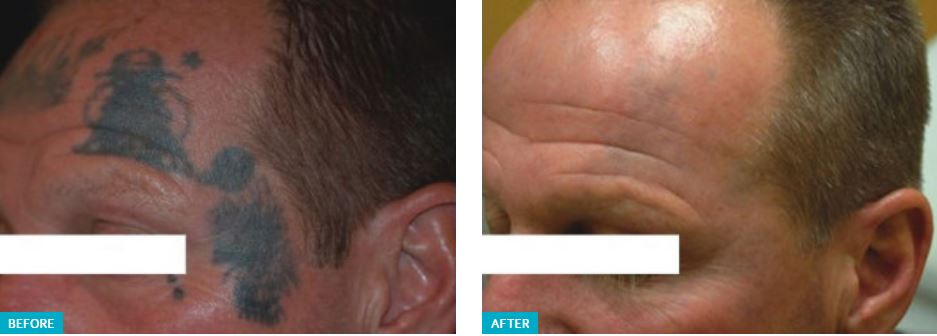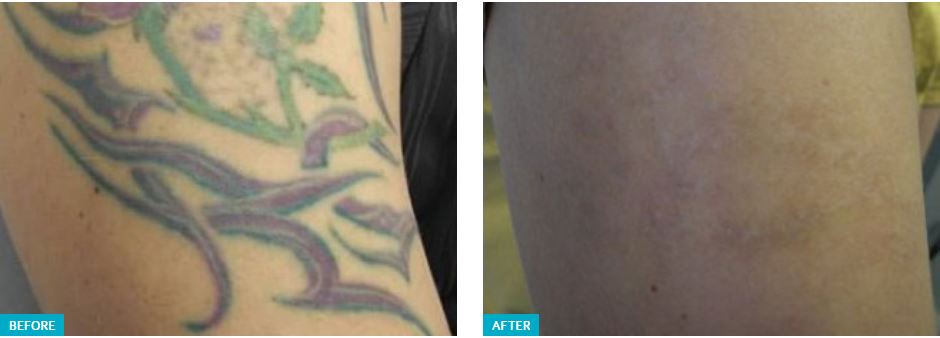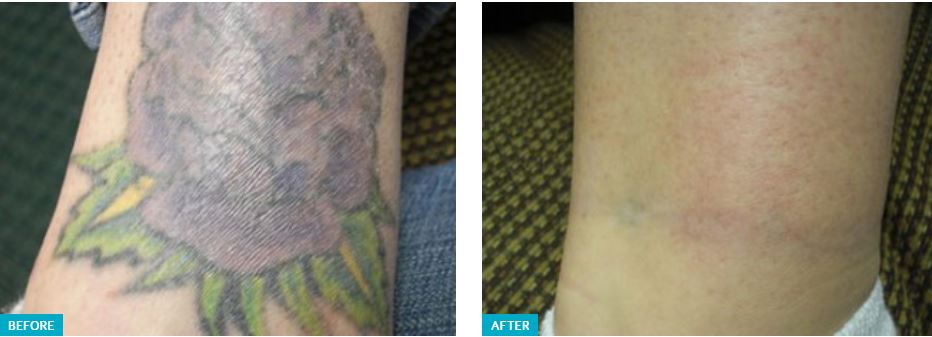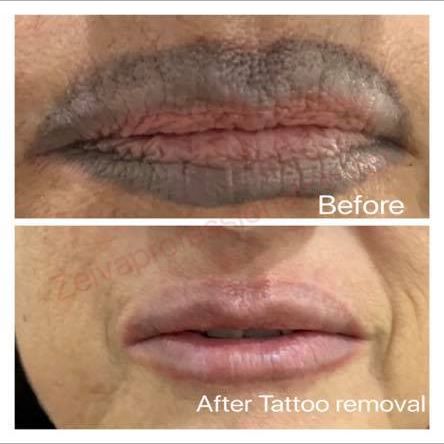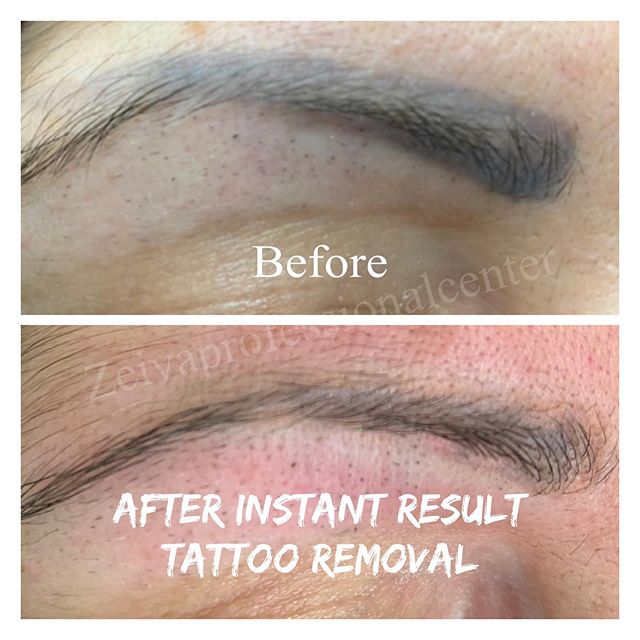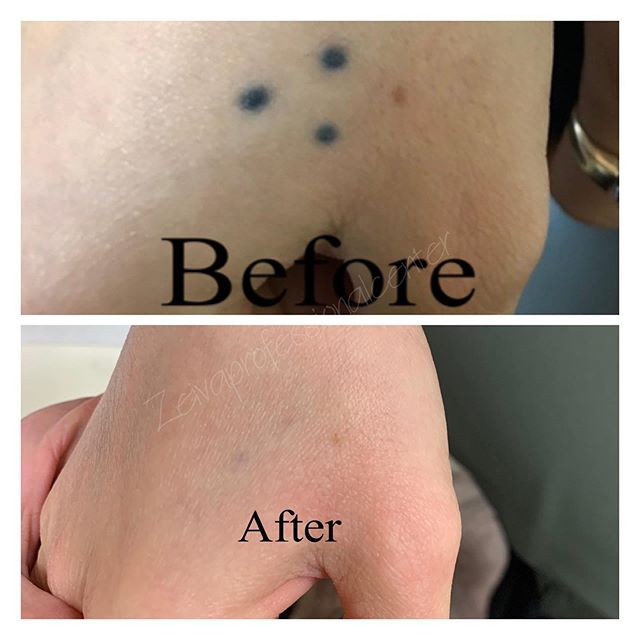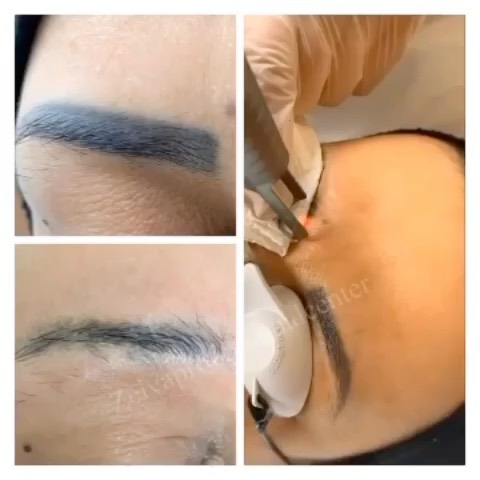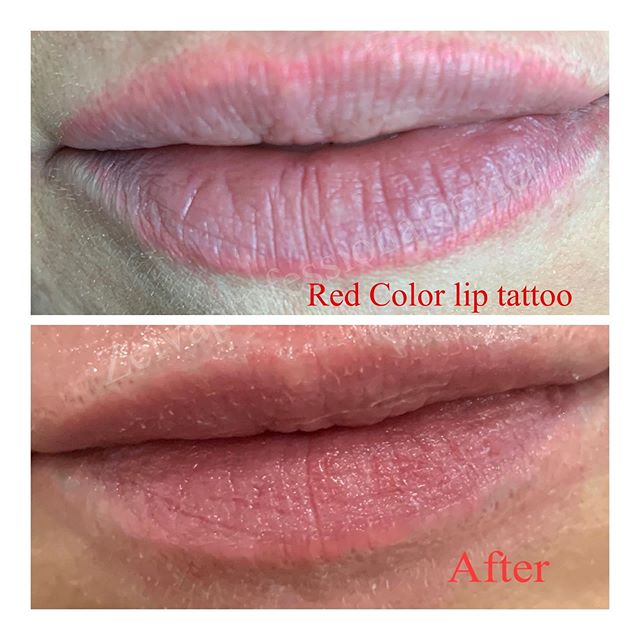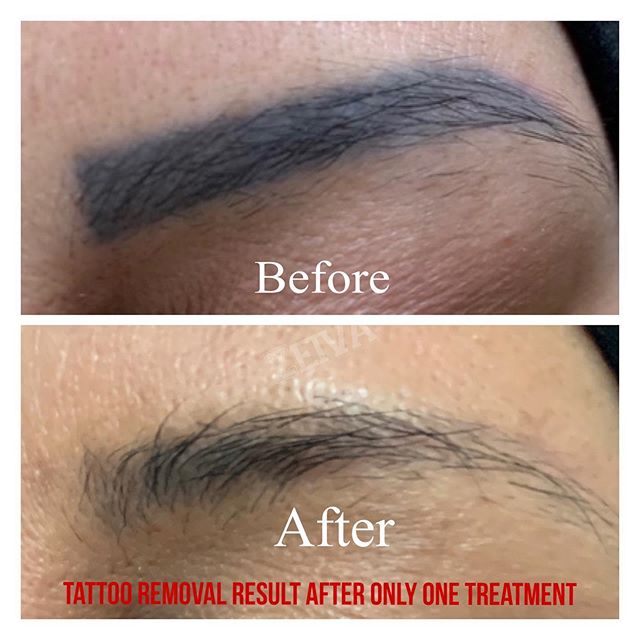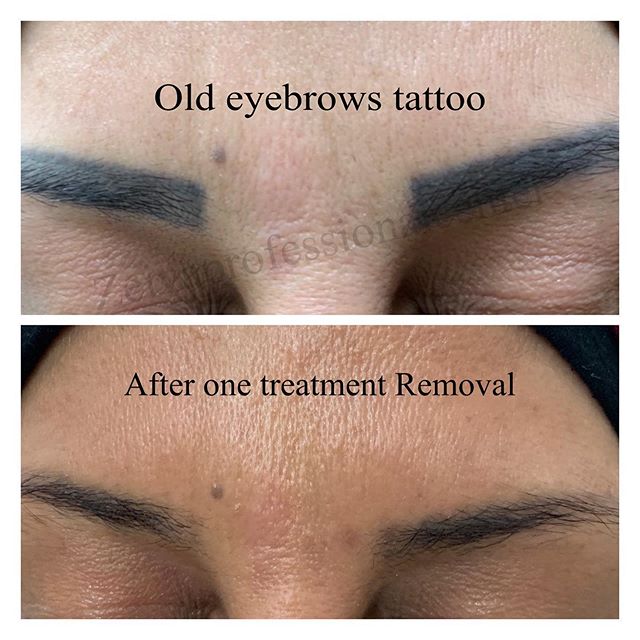TATTOO REMOVAL
What Can Help Me?
Tattoo removal erases—or at least significantly fades—an unwanted tattoo. Tattoos are almost always removed with lasers, which selectively target and remove the ink without damaging the surrounding tissue.
Lasers deliver high-intensity energy to penetrate the epidermis (the outer layer of skin) and break up the pigment into smaller ink particles, which the body metabolizes and excretes. New lasers and lasering techniques have improved this process and its results.
Tattoo removal is becoming increasingly common. A 2015 Harris poll showed that 29% of Americans have at least one tattoo, compared to 21% in 2012. Tattoo regret is also on the rise: The same survey showed that 23% of people with tattoos wish they could erase at least some of their ink, compared to just 14% in 2012.
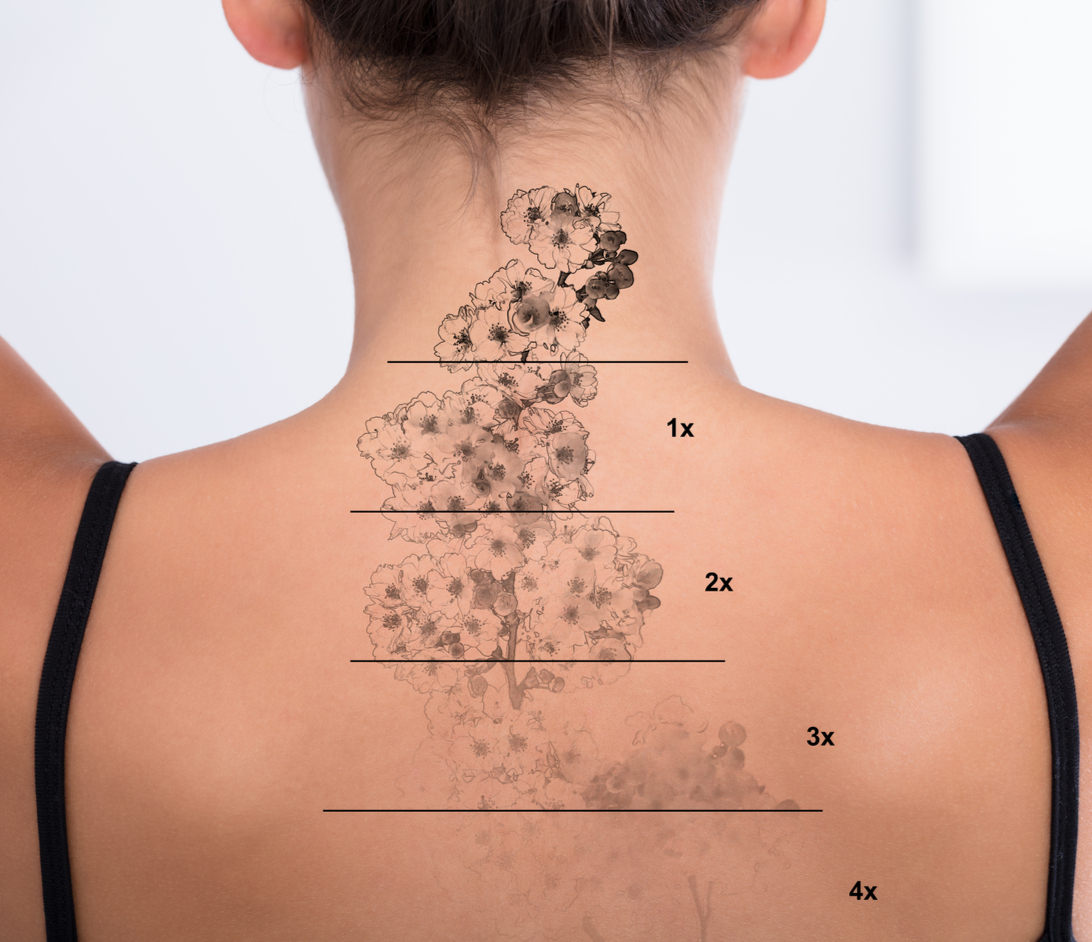
How does tattoo removal work?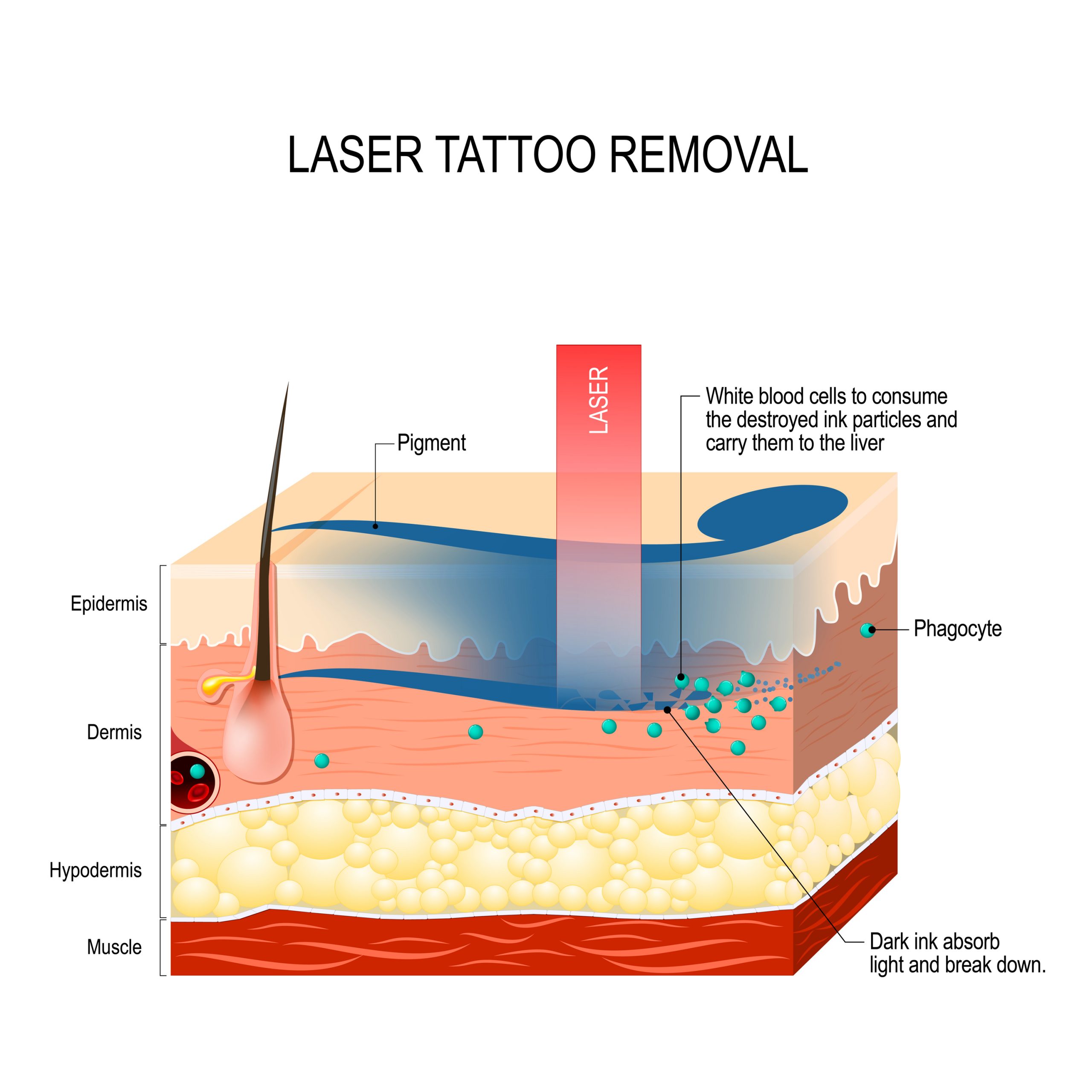
There are many ways to remove a tattoo, including using chemical peels, dermabrasion, diathermy, or simply covering it up to hide the tattoo. However, providers who specialize in tattoo removal generally agree that a laser is the safest, most reliable method.
If you choose to get the tattoo removed with a laser, the technician will first clean the area and likely photograph your tattoo to document progress along the way. They may apply topical numbing cream 30 minutes before the treatment—or, if the tattoo isn’t too large, they mayl inject lidocaine to anesthetize the area, or they may use ice or a cooling machine to numb the area.
As the technician applies the laser light to your skin, the ink absorbs the laser energy, heating up and breaking down into small ink particles. Your body will flush out the ink particles over the next few weeks, and the tattoo will slowly begin to fade.
What’s the best laser for tattoo removal?
It depends on what type of tattoo you have. Different colors respond better to different types of lasers. A major consideration is the wavelength of the laser. Certain wavelengths are better at removing specific ink colors.
- Black ink is removed at 1,064 nanometers (nm), offered by Nd:YAG and Q-switched lasers.
- Red, yellow, and orange are removed with 532 nm, offered by Q-switched lasers.
- Lighter blues, greens, and purples may do better with wavelengths between 690 nm and 765 nm, offered by Alexandrite lasers.
Sometimes more than one laser gets the best result, since different lasers offer unique benefits and can be more powerful in combination. For example, a study published in the Journal of Cutaneous and Aesthetic Surgery shows that pairing laser treatments may eliminate tattoos faster, in fewer sessions and with reduced side effects.
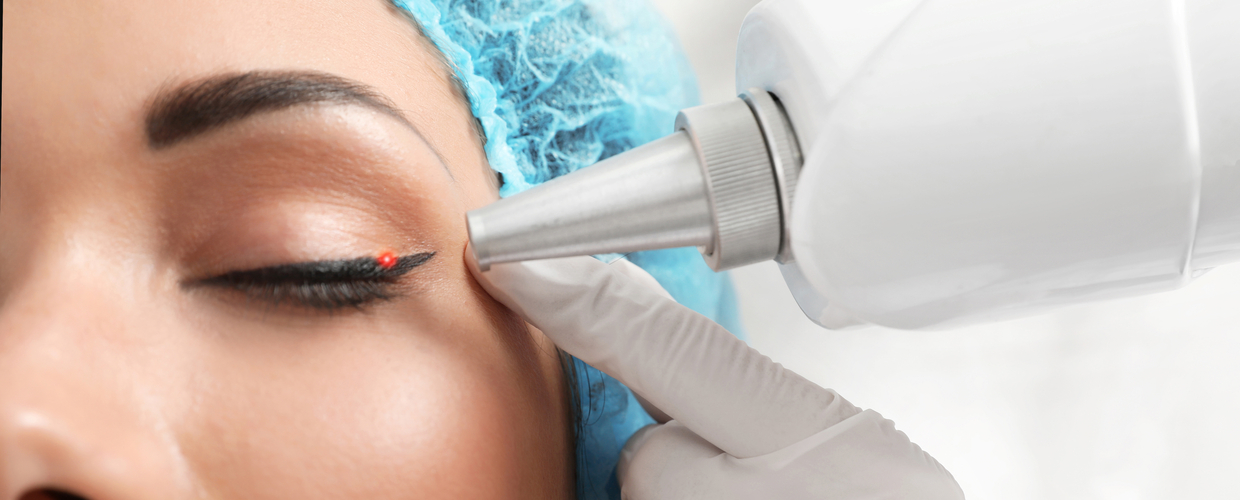
Does tattoo removal hurt?
Getting a tattoo removed via laser does have some level of pain, but it’s not usually excruciating. Most people say it feels very much like the initial pain of getting inked. Because most providers numb your skin, it may not even hurt that much.
“It wasn’t that bad—kind of felt like you were being popped by a hot rubber band. It was over very fast!” – Client
How long does it take to remove a tattoo, and how many sessions will you need?
The typical course of treatment for is four to six sessions, but the number of sessions you’ll need “largely depends on the depth of the tattoo, the types and colors of ink used, the color of skin to be treated, and the types of lasers used to eradicate it,” says Zeiva.
A few more important points to keep in mind:
- Tattoos that are less than a year old are challenging to remove.
- Fading is generally slower for tats located further down the arm or leg (where blood supply is weaker).
- White ink can be tricky, and green ink is notoriously difficult to remove.
A removal session can take anywhere from a few minutes for small tattoos to more than an hour for larger ones, and largely depends on the size and color. And sessions don’t typically happen back to back; you’ll have to wait a few weeks between appointments to allow proper time for the skin to heal.
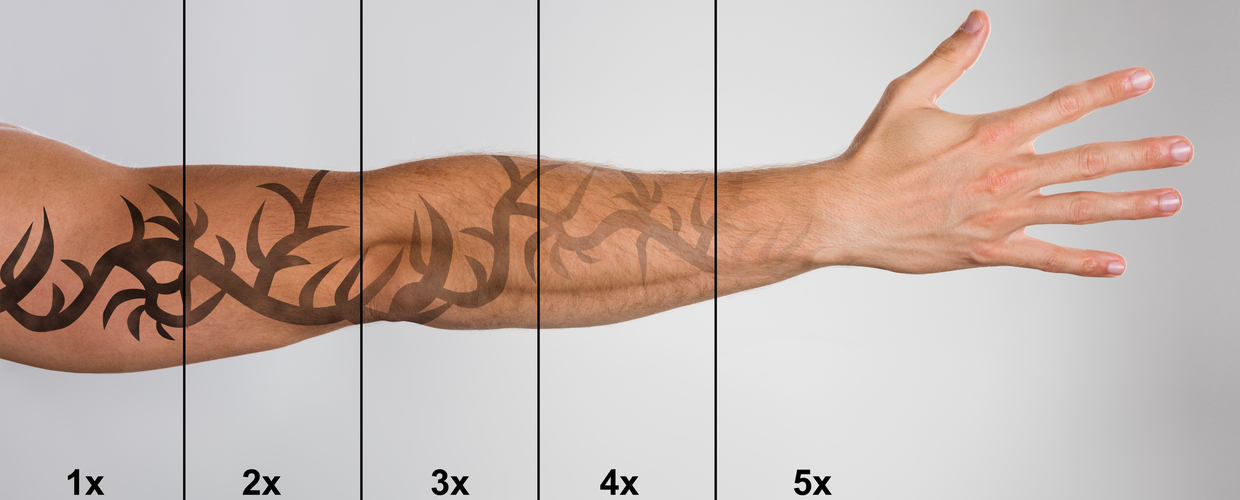
What should you expect after a laser tattoo removal treatment?
After your first session, your tattoo should appear slightly faded. More often than not the surrounding skin will swell, itch, appear red, or possibly blister.
“Immediately after treatment, there should be a ‘slight frosting’ on the area that is treated. Redness and swelling at the treatment site can occur and may last up to two hours or longer. Pinpoint bleeding may also occur.
An occlusive ointment (like Aquaphor, bacitracin, or even Vaseline) will be applied to the treated area and covered with a bandage. To speed healing, the ointment should be applied a few times a day for several days. To reduce the chance of hyperpigmentation, it’s important to avoid sun exposure while the skin heals.
Can tattoos be removed completely?
Most tattoos can be completely removed in six sessions. Once they’re removed, they’re gone. Some tattoos, however, such as those with purple ink, are nearly impossible to erase completely and may take many more sessions. If you’re left with a faint, blurry image after your removal sessions, another option is to hide the tattoo with a new one.
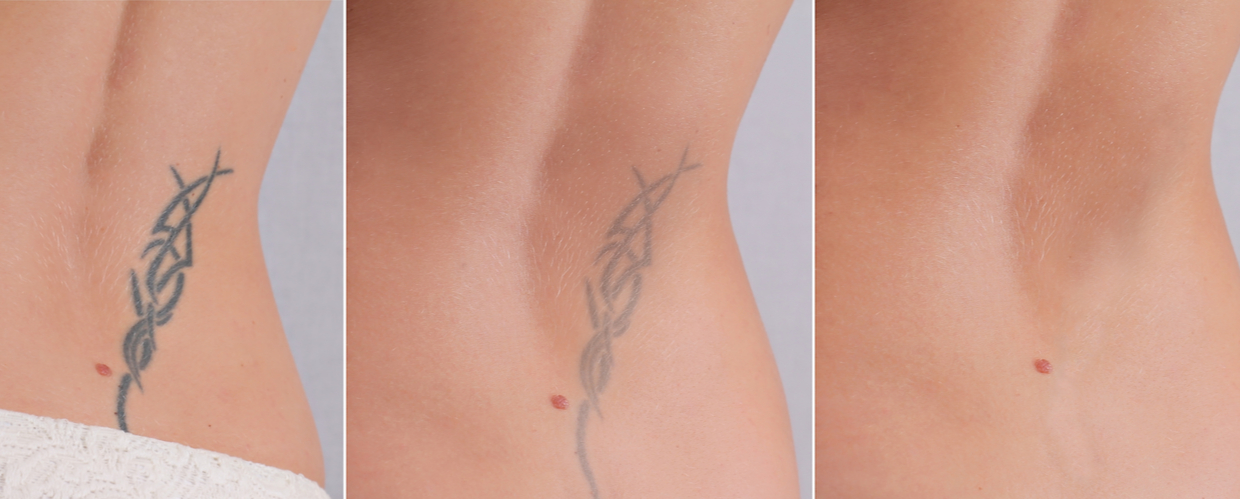
How soon after getting a tattoo can you have it removed?
Most dermatologists recommend that you wait at least six weeks after getting a tattoo before trying to get it removed. Your skin needs time to heal properly, and getting a tattoo removed too early could cause blistering or scarring.
How much does tattoo removal cost?
Your cost will largely depend on the size of your tattoo and the color of its ink. You may be able to find cheaper treatment sessions that use older technology, but you may have less success in completely removing the tattoo and will need more sessions.
These additional factors will affect the cost of your tattoo removal.
- Your provider’s level of experience
More experienced providers usually charge more for their expertise—but the cost can be worth it to minimize the risk of side effects and get the best results. A treatment from an aesthetician, medical assistant, or registered nurse typically costs less than one from a doctor. - Their practice location
Medical practices and medspas operating in areas with higher rents and costs of living typically charge more. This isn’t an indication of the quality of work they’ll provide. - Special offers or discounts
Some providers offer promotional pricing for a limited time or discounted prices for multiple tattoo removal treatments.
Are there alternatives to laser tattoo removal?
There are alternatives to laser tattoo removal, such as skin abrasion, cryosurgery, chemical peels, and tattoo creams. None of these options are as safe or as reliable as laser tattoo, according to the National Institute of Health.
Noninvasive methods include covering an old tattoo with a new tattoo, or concealer specifically formulated as tattoo cover-up, such as Dermablend Tattoo Coverage. Whatever option you’re considering, it’s smart to check with your doctor before you do it.
Sources & studies
Real Clients – Real Results
Daniella
★★★★★
“Great experience!! Zeiva is so knowledgeable. My daughter and I are definitely going back!!”
Dorothy
★★★★★
“Very professional! Just one treatment and I believe I already see an improvement!”
Helga
★★★★★
“I had the best experience here at this center. Very clean. Very professional. They went above and beyond, and I will definitely stay a long-time customer.”
Betsy
★★★★★
“I ❤ this place! Very professional and great prices. Excellent service!”
TREATMENT
We can help…
We’re here to help you achieve your desired look.
Choose from a variety of skin rejuvenation & body contouring procedures, along with corrective treatments for scars, unwanted hair, age spots and tattoos.
Our technically certified cosmetic estheticians will work with you to enhance your natural beauty.
Schedule a consultation today!
